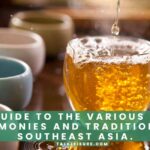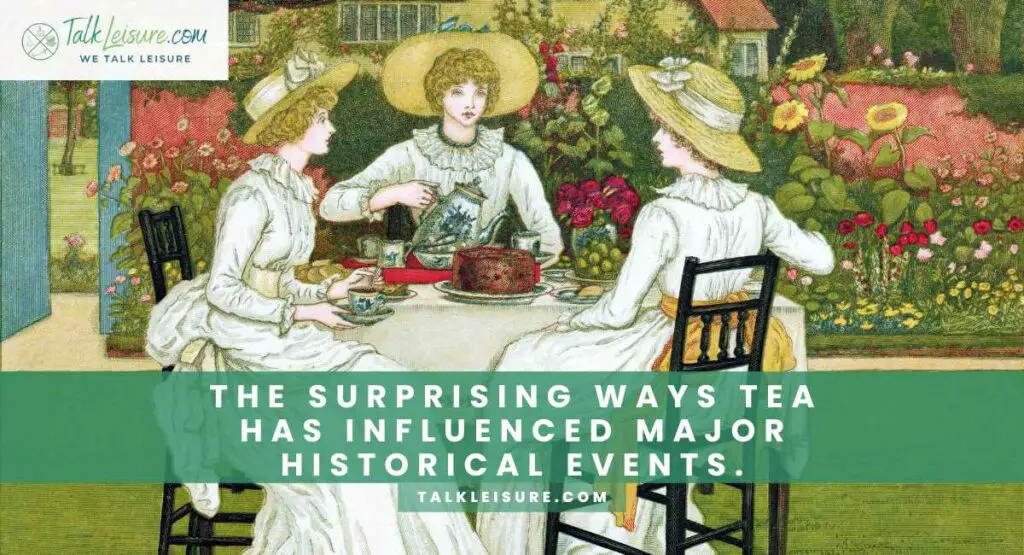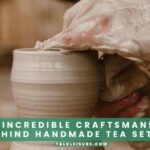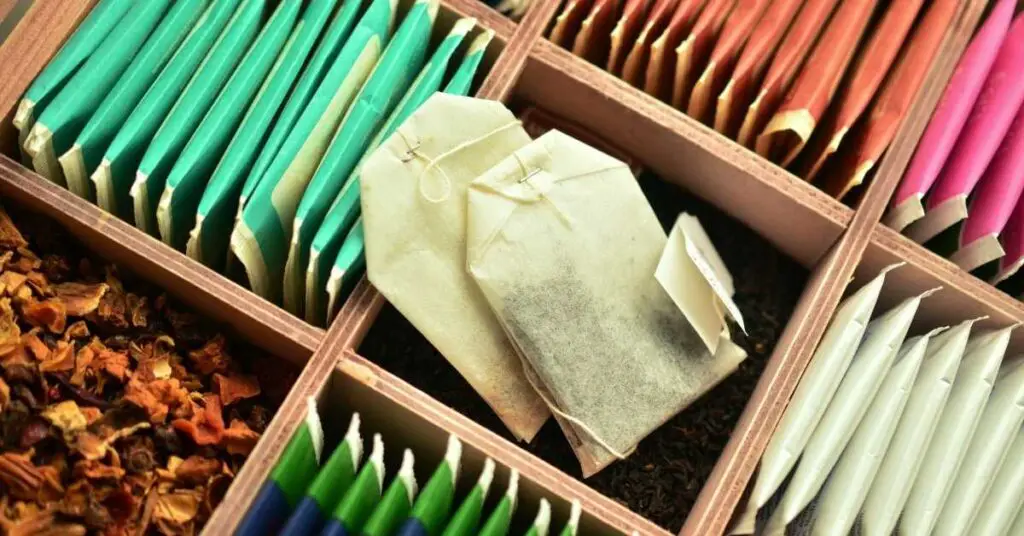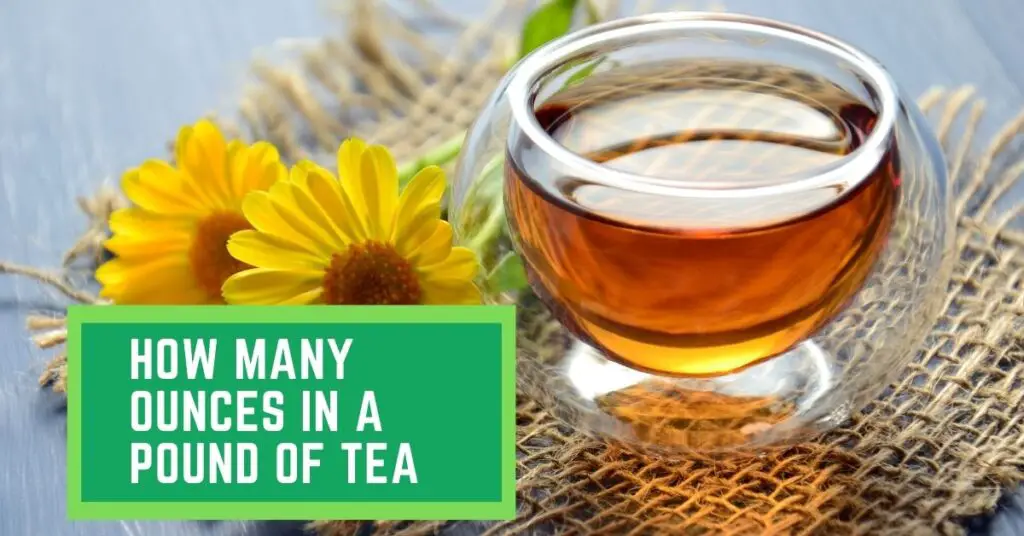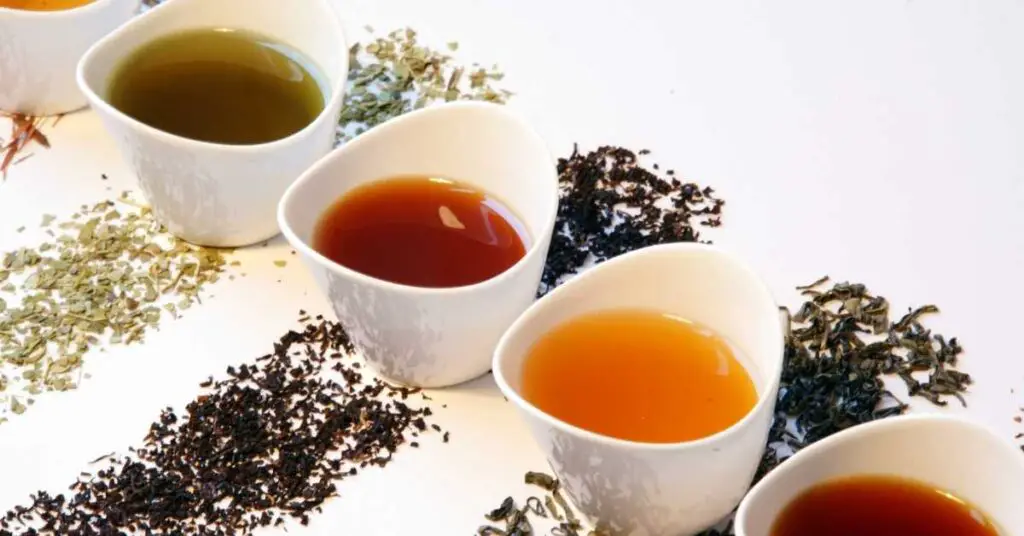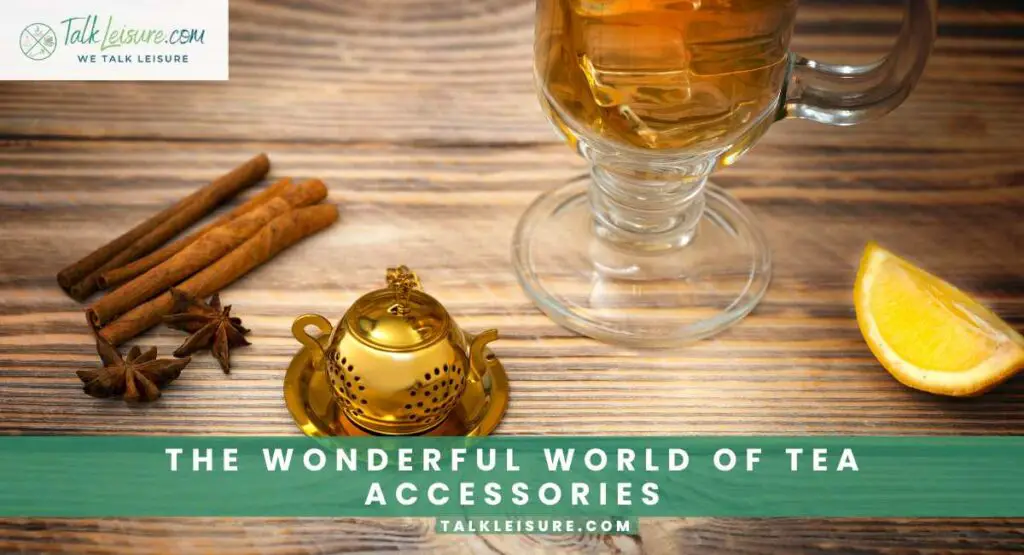Choosing the perfect teapot is akin to finding the ideal partner for your tea journey. It’s a vessel that holds not just liquid but memories, traditions, and moments of solace. In this exploration, we dive deep into the world of teapots, considering factors beyond material and capacity.
From cultural influences to regional tea traditions, we’ll uncover the nuanced art of teapot selection. Join us as we journey through time, continents, and rituals to find the teapot that resonates with your unique tea-drinking experience. Let’s embark on this tea-infused adventure together.
Also read: The surprising ways tea has influenced major historical events.
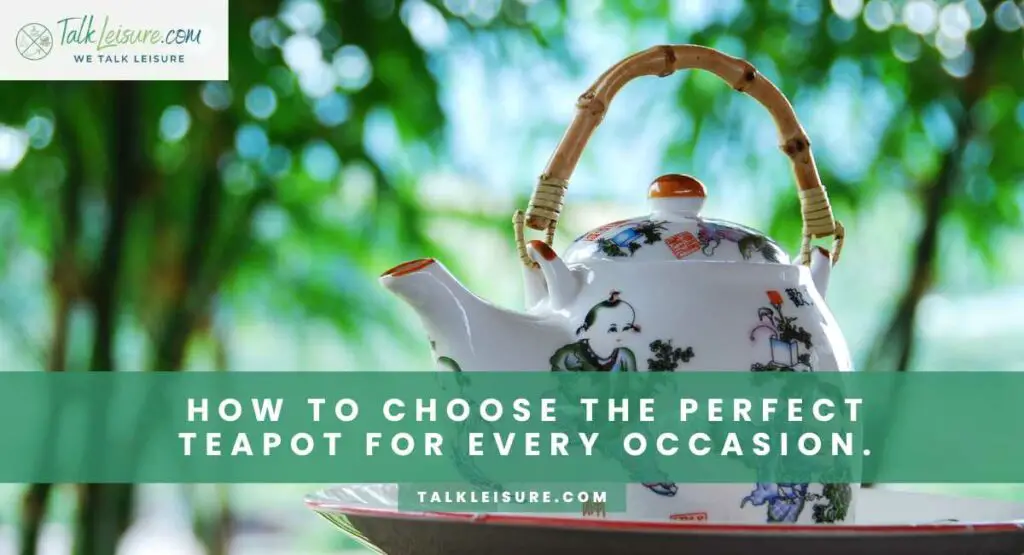
How to Choose the Perfect Teapot for Every Occasion
Hey there, tea enthusiasts! Choosing the right teapot can make all the difference in your tea-drinking experience. Whether you’re a casual sipper or a dedicated connoisseur, finding the perfect teapot is like discovering the right wine glass for a cherished vintage.
In this section, we’ll explore the key factors that should dance through your mind as you embark on this delightful journey of teapot selection. We’re talking about everything from the material of the teapot to its special features and even its cultural influence. So, grab your favorite brew, settle in, and let’s get started!
Factors to Keep in Mind When Selecting a Teapot for a Specific Situation
Think of your teapot as a versatile tool in your tea arsenal. It needs to suit not just your taste buds, but the occasion too. Picture this: a cozy porcelain teapot for a quiet evening, or a sleek stainless steel one for a lively gathering. It’s like choosing the right outfit for the right event – you want to look and feel just right.
First off, we’ll unravel the mysteries of heat retention. Different materials hold heat differently, affecting the taste and temperature of your tea. Plus, we’ll delve into durability, because let’s face it, nobody wants a delicate teapot if you’ve got energetic kids or a bustling kitchen.
Then there’s maintenance – are you the type who revels in the ritual of caring for delicate porcelain, or do you prefer the practicality of stainless steel? Your lifestyle plays a big role in this decision.
Also read: Top 10 must-visit tea festivals around the world.
Material Comparisons: Unearthing the Magic of Teapot Materials
Now, let’s talk materials. Each type has its unique charm, and it’s not just about looks. Porcelain exudes elegance, stainless steel spells durability, and glass offers a visual spectacle of steeping leaves. And don’t even get us started on the classic allure of silver, the earthy charm of clay, and the centuries-old wisdom behind Yixing pottery.
Each material has its pros and cons, and we’ll be diving deep into those. By the time we’re done, you’ll be armed with knowledge that’ll have you confidently perusing teapot aisles like a seasoned pro.
So, if you’ve ever wondered why your tea tastes a tad different in that glass teapot compared to the porcelain one, or if a clay teapot is truly worth the investment, you’re in the right place. We’re going to demystify it all.
Stick around, because up next, we’ll be exploring the special features that can turn an ordinary teapot into an extraordinary one. Think infusers, drip-free spouts, and handles that keep your hands cool even when the tea’s piping hot. It’s a teapot revolution, and you’re invited!
Material Comparisons – Unearthing the Magic of Teapot Materials
Welcome to the heart of teapot selection – the materials. Just like a good cast can make or break a movie, the material of your teapot sets the stage for your tea-drinking experience. Each material has its personality, influencing everything from heat retention to aesthetics.
Advantages and Disadvantages of Porcelain Teapots
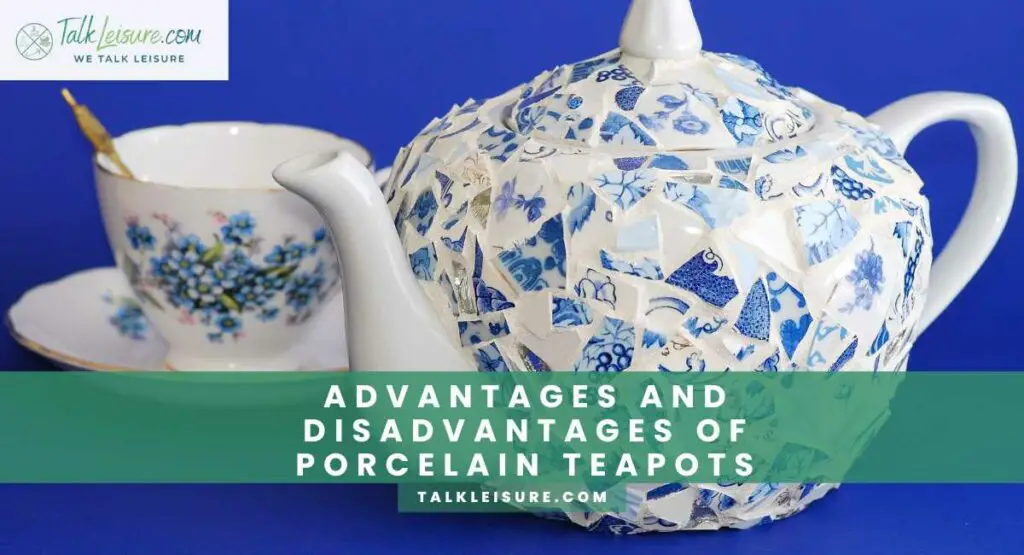
Ah, porcelain, the timeless classic. Delicate, elegant, and revered for centuries. A porcelain teapot is like a blank canvas, allowing the true colors and flavors of your tea to shine through. Its fine texture and craftsmanship make it a favorite among tea purists.
However, it’s not without its quirks. Porcelain can be a bit fragile, and it’s not the best at retaining heat for extended periods. But oh, the beauty it brings to your tea rituals!
Advantages and Disadvantages of Stainless-Steel Teapots
Now, let’s talk about the workhorse of the teapot world – stainless steel. If you’re looking for durability that can withstand a small earthquake, stainless steel is your best friend. It’s practically indestructible, making it a great choice for busy households or outdoor adventures. Plus, it’s a champ at heat retention, keeping your tea warm for a good long while.
On the flip side, some might find it lacking in the charm department. But trust us, its rugged reliability more than makes up for it.
Advantages and Disadvantages of Glass Teapots
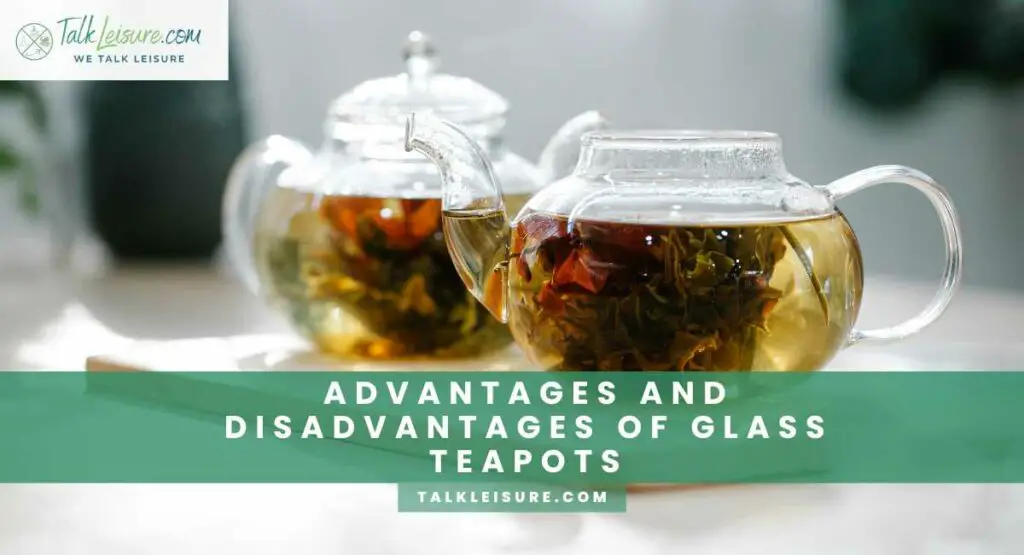
Glass teapots, oh the sheer delight of watching those leaves dance in hot water! Transparent, stylish, and perfect for showcasing the beauty of your tea. Glass doesn’t absorb flavors, so you’ll experience your tea in its purest form.
However, it’s not without its considerations. Glass can be a tad delicate, demanding a bit more TLC in handling. Plus, it’s not the best at retaining heat, so your tea might cool down a bit quicker.
Advantages and Disadvantages of Silver Teapots
Ah, the grandeur of silver! A silver teapot is like the crown jewel of your tea collection. It exudes opulence and tradition, making it a prized possession for tea enthusiasts with a taste for the finer things. The metal’s natural conductivity ensures excellent heat retention, keeping your brew warm and inviting.
On the downside, silver requires a bit of upkeep to maintain its lustrous shine, and it can be a bit on the pricey side. But for those who appreciate the art of tea, a silver teapot is a treasure worth every penny.
Advantages and Disadvantages of Clay Teapots
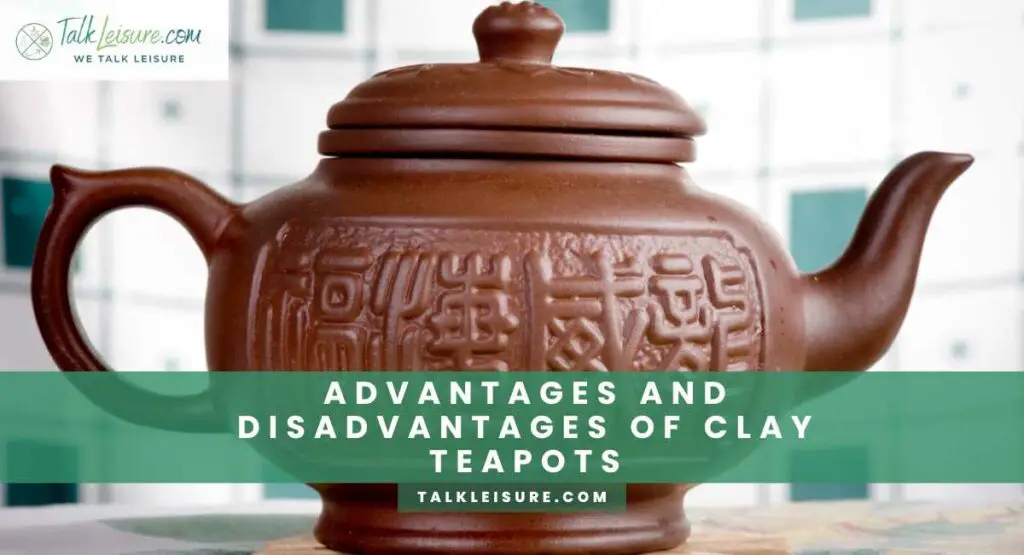
Clay teapots, steeped in history and tradition, have a unique charm all their own. Often associated with Chinese and Japanese tea ceremonies, clay teapots have a magical way of enhancing the flavors of your tea over time. They’re like a seasoned chef’s favorite pot, infusing character into every brew.
However, they can be a bit delicate and might require a bit more care in handling. The porous nature of clay means they can absorb flavors, so they’re best dedicated to a specific type of tea.
There you have it, a whirlwind tour of the enchanting world of teapot materials. Each one brings its own character to your tea-drinking experience. As we move forward, we’ll explore the special features that can elevate your teapot to a whole new level. Get ready for a teapot transformation!
Special Features to Consider
Alright, tea aficionados, now that we’ve got a grip on the materials, it’s time to explore the bells and whistles – the special features that can turn a good teapot into a great one. Get ready to discover the details that can elevate your tea experience to a whole new level.
Infusers and Strainers: Choosing Teapots with Built-in Infusers
Picture this: loose tea leaves dancing freely in hot water, releasing their rich flavors. To make this magic happen without the mess, you’ll want a teapot with a built-in infuser or strainer. These nifty gadgets ensure a smooth brew, capturing every nuance of flavor while keeping those leaves in check.
Whether it’s a fine-mesh infuser for delicate greens or a sturdy strainer for hearty black teas, we’ll guide you on finding the perfect match.
Drip-free Spouts: Ensuring Clean and Controlled Pouring
Nobody likes a leaky teapot, especially when it’s poised over your favorite antique tablecloth. That’s where drip-free spouts come in. They’re like the courteous waitstaff of the teapot world, ensuring your tea goes where it’s supposed to – in your cup, not on the countertop. We’ll explore the different spout designs and help you choose one that promises a graceful pour every time.
Insulated Handles: Comfort and Safety in Handling Hot Teapots
Tea should warm your soul, not your fingers. That’s where insulated handles step in, offering a secure grip even when your teapot is piping hot. No need for oven mitts or acrobatic maneuvers. We’ll introduce you to teapots that prioritize both style and safety, so you can serve your brew with confidence and ease.
These special features may seem like small details, but they can make a world of difference in your tea-drinking experience. Whether you’re a fan of loose leaves or tea bags, a seasoned pro or just starting out, these features are designed to enhance every cup.
So, join us in the next section as we dive into teapots tailored for specific occasions. From intimate gatherings to grand celebrations, we’ve got the perfect pot for every event.
Occasion-Specific Teapot Recommendations
Teapots, much like the occasions they accompany, come in all shapes and sizes. Let’s explore the perfect teapot selections for various moments in life, from cozy gatherings to grand affairs.
Tea Parties: Teapot Selections for Elegant Gatherings
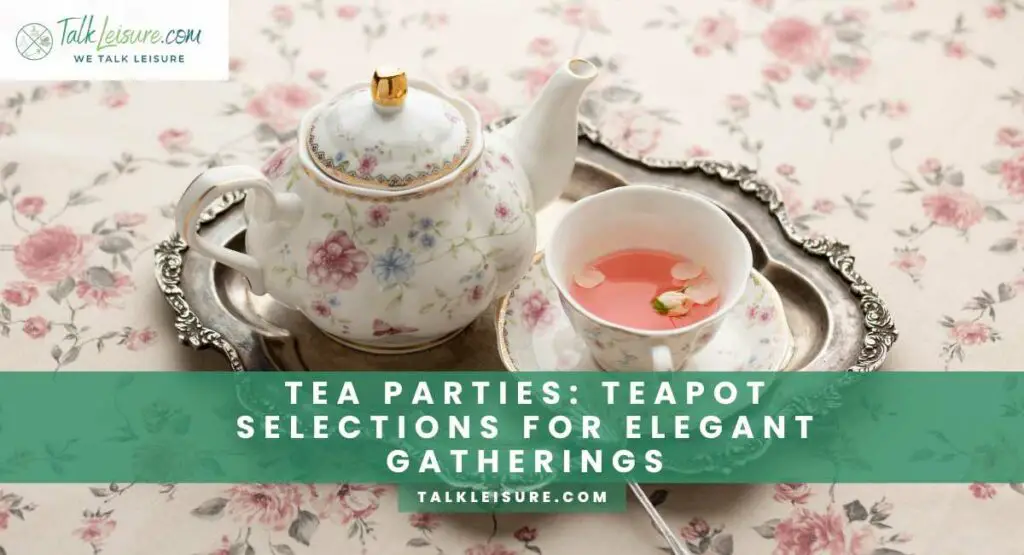
Ah, the allure of a tea party! Whether it’s an intimate gathering with close friends or a grand affair with all the bells and whistles, the teapot you choose can set the tone for the entire event. For tea parties, we recommend porcelain teapots. Their delicate charm and fine craftsmanship add an air of sophistication to any affair. Opt for a design that complements your table setting, and watch as your guests marvel at both the tea and its elegant vessel.
Everyday Use: Practical Teapot Choices for Daily Enjoyment
For those moments when tea is not just a beverage but a comforting ritual, you need a teapot that’s reliable and functional. In this case, stainless steel teapots are your best bet. They’re sturdy, durable, and can handle the demands of daily use with ease. Plus, their excellent heat retention ensures that your brew stays warm, cup after cup. Look for a design that suits your style, and let it become your trusty companion in daily tea enjoyment.
Formal Events: Elevating Tea Service for Special Occasions
When it comes to formal events, be it a wedding reception, an anniversary celebration, or a high-profile business gathering, the teapot should be nothing short of a statement piece. Silver teapots are the epitome of grandeur and refinement, adding a touch of opulence to any occasion. Their natural ability to retain heat ensures that your tea remains at its best, even during extended events. So, when it’s time to impress, let a silver teapot take center stage.
Each occasion calls for a teapot that complements the moment, turning it into a memory to cherish. By selecting the right teapot for the right event, you’re not just serving tea; you’re creating an experience. Join us in the next section as we dive into the cultural influences that can further shape your teapot choices. From Chinese tea ceremonies to Japanese tea traditions, we’ll unravel the threads that connect tea to culture.
Cultural Influences on Teapot Choice
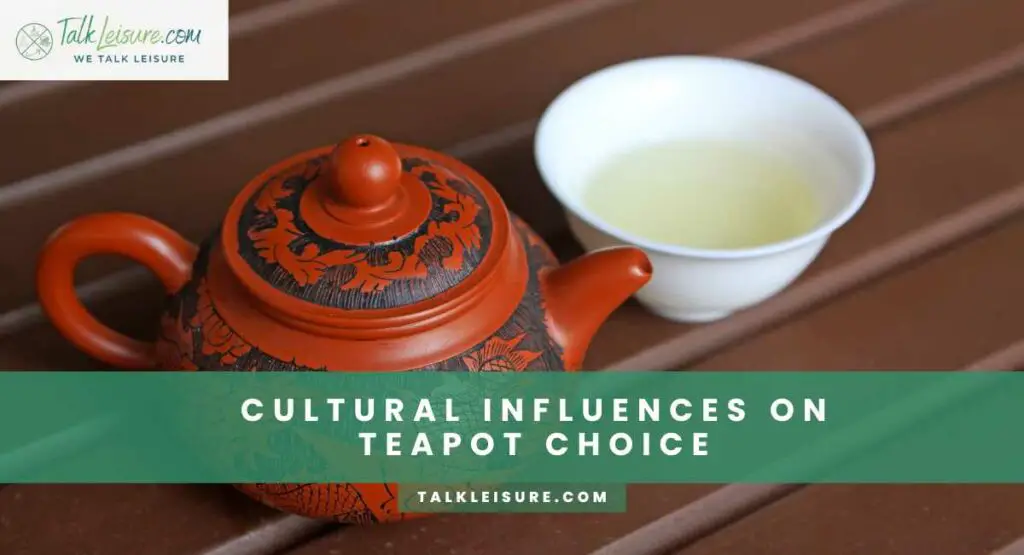
Tea isn’t just a drink; it’s a cultural experience woven into the fabric of societies around the world. Let’s take a journey through the teapot choices that have been shaped by the rich traditions of China and Japan.
Chinese Teapots: Yixing vs. Porcelain for Traditional Chinese Tea Ceremonies
China, the birthplace of tea, holds a treasure trove of tea traditions. When it comes to teapots, two distinct styles reign supreme: Yixing and Porcelain.
Yixing Teapots
Crafted from the famous purple clay of the Yixing region, these teapots are revered for their ability to absorb the essence of the teas brewed in them. Over time, a well-used Yixing teapot develops a patina that enhances the flavors of the tea, creating a unique and personalized brewing experience. These teapots are the heart and soul of traditional Chinese tea ceremonies, cherished for their connection to nature and the art of tea.
Porcelain Teapots
A symbol of refinement and elegance, porcelain teapots have been a staple of Chinese tea culture for centuries. Their delicate craftsmanship and fine texture allow them to showcase the true colors and flavors of the tea. They are often used for brewing green and white teas, allowing the natural beauty of the leaves to shine through. Porcelain teapots are versatile and can adapt to a wide range of teas, making them a beloved choice for tea enthusiasts worldwide.
Japanese Teapots: Kyusu vs. Tetsubin for Japanese Tea Brewing
Japan, with its Zen-like approach to tea, offers two distinct teapot styles that reflect its unique tea culture: Kyusu and Tetsubin.
Kyusu Teapots
The Kyusu is a work of art designed specifically for brewing Japanese green teas like Sencha and Gyokuro. Characterized by its side handle and fine mesh filter, the Kyusu allows for precise control over steeping time and water temperature. This ensures that every cup of Japanese tea is a harmonious blend of flavor and aroma. The Kyusu embodies the Japanese philosophy of mindfulness in every sip.
Tetsubin Teapots
Cast iron Tetsubin teapots are a true testament to the marriage of form and function. While they are not typically used for brewing tea directly, they excel in water boiling, making them an essential part of the Japanese tea ceremony. The ritual of heating water in a Tetsubin embodies the reverence for the purity and simplicity of tea, creating a profound sense of ceremony.
By understanding the cultural influences behind these teapot choices, we gain a deeper appreciation for the artistry and thoughtfulness that go into each vessel. Join us in the next section as we explore how the shape of a teapot can influence the brewing process. From classic round designs to modern marvels, we’ll uncover the secrets of teapot form.
This section delves into the cultural significance behind Chinese and Japanese teapot choices, highlighting their unique characteristics and their roles in traditional tea ceremonies. It sets the stage for the next section, which will explore the influence of teapot shapes on the tea brewing process.
Teapot Shapes and Their Functions
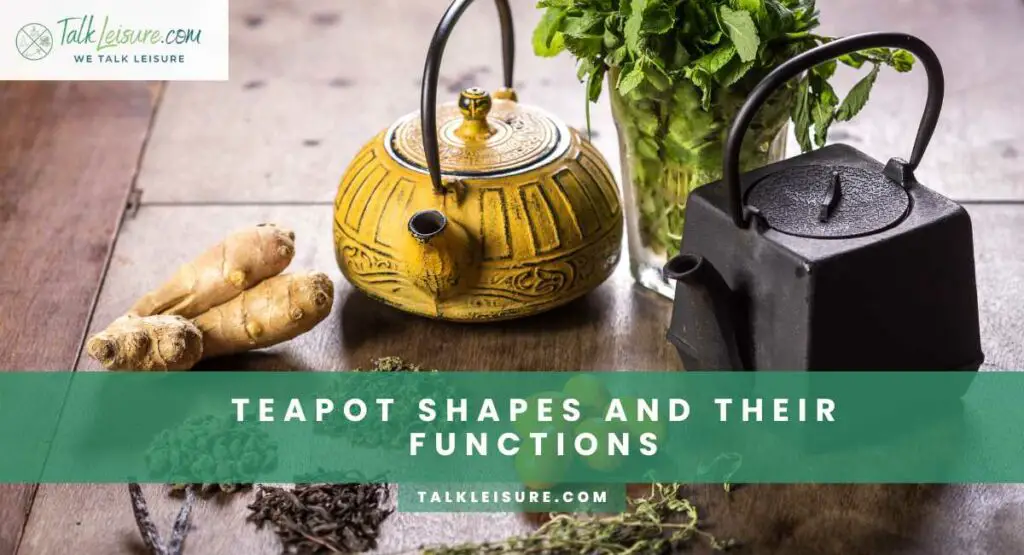
Teapots come in an array of shapes, each with its own unique influence on the brewing process. Let’s unravel the secrets behind teapot forms and discover how they can enhance your tea-drinking experience.
Round vs. Oval vs. Square: How Teapot Shape Affects Brewing
The shape of a teapot is more than just aesthetic appeal; it plays a pivotal role in the infusion process. Here, we’ll dissect the differences between round, oval, and square teapots.
Round Teapots
The classic round teapot provides ample space for tea leaves to expand and release their flavors. It promotes even steeping, ensuring a consistent brew. This shape is particularly favored for black and oolong teas that benefit from a full infusion.
Oval Teapots
With their elongated bodies, oval teapots encourage a slower, controlled infusion. The elongated shape allows for a longer journey of the water through the leaves, resulting in a more nuanced and delicate brew. They are often preferred for delicate teas like white and green varieties.
Square Teapots
Square teapots are the rebels of the teapot world, challenging convention with their sharp angles. This shape creates unique water flow patterns, leading to a distinct infusion process. They’re known to bring out the bold flavors of robust teas like Pu-erh and herbal infusions.
Traditional vs. Modern Designs: Finding a Teapot Style that Suits You
Teapot design has evolved over the years, with traditional and modern styles catering to different tastes and preferences.
Traditional Designs
These teapots pay homage to centuries-old craftsmanship and cultural influences. Whether it’s the intricate patterns of Chinese Yixing pots or the timeless elegance of English porcelain, traditional designs carry a sense of history and reverence for tea culture.
Modern Designs
Sleek, minimalist, and often experimental, modern teapot designs push the boundaries of form and function. They incorporate innovative materials and cutting-edge techniques, catering to those who appreciate a contemporary twist on this age-old vessel.
Choosing between traditional and modern designs is a matter of personal taste. Are you drawn to the rich heritage of tea-making, or do you seek a teapot that mirrors your contemporary lifestyle? Whichever you choose, rest assured that the perfect teapot is out there, waiting to complement your tea ritual.
In our next section, we’ll tackle the practical aspect of teapot selection: size. From single servings to family gatherings, we’ll guide you in finding the capacity that suits your needs. Join us as we unravel the secrets of teapot size.
This section provides a detailed exploration of how teapot shapes influence the brewing process and highlights the distinction between traditional and modern designs. It sets the stage for the next section, which will focus on teapot capacity.
Sizing Considerations Beyond Capacity
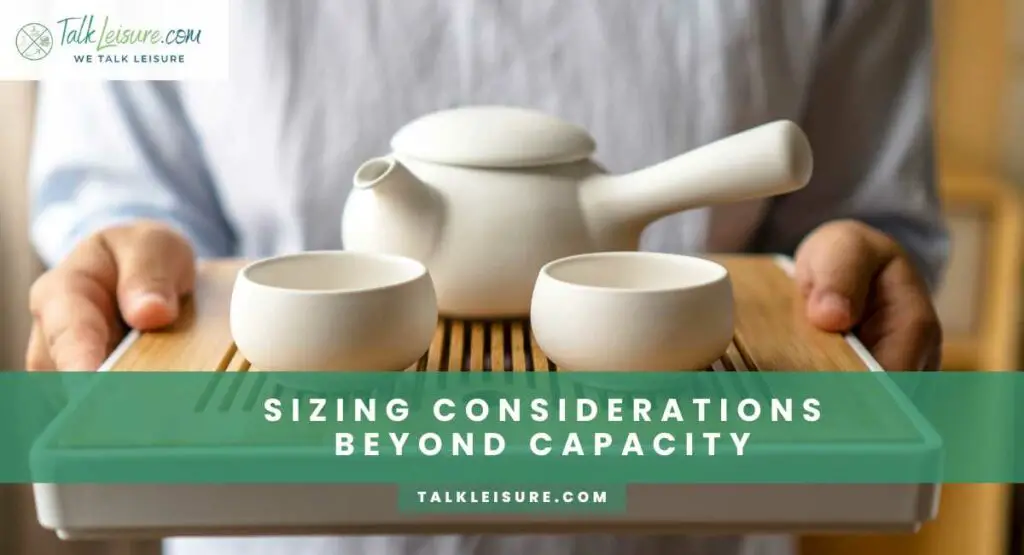
Teapot sizing goes beyond just the amount of tea it can hold. Let’s explore how the size and form of your teapot can impact your tea experience in various practical ways.
Single Serving vs. Family Size: Choosing a Teapot to Match Your Needs
Tea time is a personal ritual, and the size of your teapot should reflect that. Are you a solitary tea enthusiast, savoring a moment of tranquility? Or do you find joy in sharing tea with loved ones, creating a bond over steaming cups?
Single Serving Teapots
These petite pots are designed for those cherished moments of solitude. They’re perfect for indulging in a solo tea session, allowing you to savor every sip without the pressure of finishing a larger pot. Single-serving teapots also offer versatility, allowing you to experiment with different teas without committing to a larger quantity.
Family Size Teapots
When tea becomes a shared experience, a family-size teapot is your best companion. With a generous capacity, they ensure everyone gets a taste of the brew. Whether it’s a weekend brunch with the family or a tea gathering with friends, a family-size teapot fosters connection and camaraderie.
Stacking and Storage: Space-Saving Teapot Solutions
Space can be a precious commodity, especially in compact kitchens or tea nooks. That’s where stackable and space-saving teapot designs come into play.
Stackable Teapots
These clever teapots are designed to nest neatly on top of each other, minimizing the footprint in your kitchen cabinet or on your tea shelf. They’re a great option for those who love variety and want to have multiple teapots without sacrificing storage space.
Compact Teapots with Detachable Handles
Some teapots come with handles that can be easily detached, allowing for more efficient storage. This feature is especially handy for teapot collectors or those with limited storage space.
By considering the size and form of your teapot, you’re not just choosing a vessel; you’re customizing your tea experience to fit your lifestyle. Whether you prefer the intimacy of a single-serving pot or the warmth of a family-size gathering, there’s a teapot out there that’s just the right fit.
Next up, let’s talk about the aesthetics of your teapot. From matching your china to vintage vs. contemporary styles, we’ll help you find a teapot that resonates with your taste.
This section provides practical insights into teapot sizing considerations beyond just capacity, taking into account individual preferences and storage constraints. It sets the stage for the next section, which will focus on the aesthetics of teapot selection.
Regional Tea Traditions and Teapot Styles
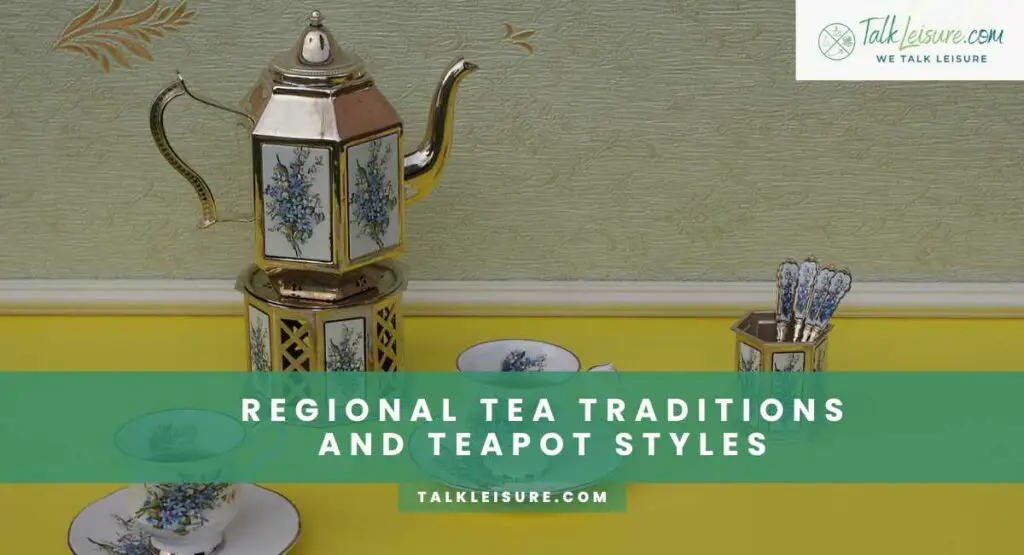
Tea has woven itself into the cultural fabric of nations, each with its unique customs and teapot styles. Let’s embark on a global journey, exploring teapot choices influenced by the rich tea traditions of Britain and Morocco.
British Tea Culture: Exploring Teapot Styles for English Afternoon Tea
Tea in Britain is not just a drink; it’s an institution. The quintessential English Afternoon Tea is a ritual that demands the perfect teapot. Let’s uncover the teapot styles that have graced countless elegant tea services.
Bone China Teapots
Delicate, translucent, and adorned with intricate patterns, bone china teapots are synonymous with English tea elegance. They complement the dainty cups and saucers that grace the tea table during afternoon tea. The fine quality of bone china ensures that the tea stays hot, allowing guests to linger over conversation and scones.
Silver-plated Teapots
For those seeking a touch of opulence, silver-plated teapots are the epitome of British luxury. They exude a sense of grandeur, making them a fitting choice for formal tea gatherings. The metal’s natural heat retention properties ensure that the tea remains inviting throughout the event.
Moroccan Mint Tea: Teapots for Preparing Traditional Maghrebi Tea
In the vibrant tapestry of Moroccan culture, tea holds a special place. The preparation of Maghrebi Mint Tea is an art form in itself, and the teapot plays a central role. Let’s explore the teapot styles that bring this traditional brew to life.
Moroccan Teapots (Glaoui or Tamegroute)
These distinctive teapots are crafted with care by skilled artisans, often featuring intricate engravings and vibrant colors. Their unique shape, with a long, curved spout and a wide base, allows for a dramatic pour that aerates the tea and creates a frothy head. This is essential for achieving the signature texture of Moroccan Mint Tea.
Tetsubin Teapots
While not traditionally Moroccan, the cast iron Tetsubin finds its place in the Moroccan tea ritual. Its excellent heat retention makes it ideal for boiling the water used in the tea-making process. The reverence for the purity and simplicity of tea aligns seamlessly with the Moroccan tea culture.
By understanding the teapot styles that accompany these regional tea traditions, we gain a deeper appreciation for the artistry and thoughtfulness that go into each vessel. Join us in the next section as we delve into the practical aspects of caring for your teapot. From cleaning tips to avoiding common pitfalls, we’ll guide you in extending the lifespan of your cherished teapot.
Conclusion: Elevate Your Tea Experience
In this teapot odyssey, we’ve unveiled the secrets behind selecting the perfect vessel for your cherished brews. From understanding the influence of materials to appreciating cultural nuances, every teapot has a story to tell.
Whether it’s the elegant porcelain gracing a British tea table or the intricate Moroccan pot brewing minty magic, each choice is a tribute to centuries of tea traditions. As you embark on your tea adventure, may your teapot be more than a vessel—it’s a companion in creating moments of warmth, connection, and reflection. With the right teapot in hand, every cup becomes a celebration. Cheers to your tea journey!
Frequently Asked Questions
- What are the 5 parts of a teapot?
The five main parts of a teapot are:
- Spout: The spout is the tapered, narrow channel through which tea is poured from the teapot. It’s designed to control the flow of liquid.
- Handle: The handle is attached to the teapot opposite the spout. It provides a way to hold and pour the teapot without burning one’s hand, as the teapot can get quite hot.
- Lid: The lid sits on top of the teapot and covers the opening where tea is added. It helps to retain heat and prevent debris from falling into the pot.
- Body: The body is the main, often rounded or cylindrical part of the teapot that holds the tea. It’s where the tea leaves or tea bags are placed, and where hot water is added.
- Base or Foot: This is the flat surface at the bottom of the teapot that allows it to stand stably on a flat surface.
Additionally, some teapots may have additional components like a strainer, which helps to filter out loose tea leaves, or an infuser, which is a removable chamber to hold loose tea leaves, allowing for easy removal after brewing.
- What is a traditional teapot?
A traditional teapot typically refers to a teapot design that has been in use for a significant period of time and is associated with specific cultural or historical practices. These teapots often exhibit classic features and may be crafted using traditional materials and techniques.
For example, in Chinese tea culture, a traditional teapot might refer to a Yixing teapot, which is made from a specific type of clay found in the Yixing region of China. These teapots have been used for centuries and are highly regarded for their ability to absorb the flavors of the tea brewed in them over time.
Similarly, in English tea culture, a traditional teapot might be made of fine bone china with delicate patterns, reflecting the elegant and refined nature of English tea service.
Overall, a traditional teapot embodies the heritage and customs associated with tea-drinking in a particular culture or region.
- Do you pour hot water into a teapot?
Yes, hot water is poured into a teapot as part of the tea-making process. The hot water is added to the teapot along with tea leaves or tea bags to brew the tea. The hot water allows the tea to infuse, releasing its flavors and aromas. The temperature of the water and the steeping time can be adjusted depending on the type of tea being brewed, as different types of tea require different brewing conditions for optimal flavor extraction.


